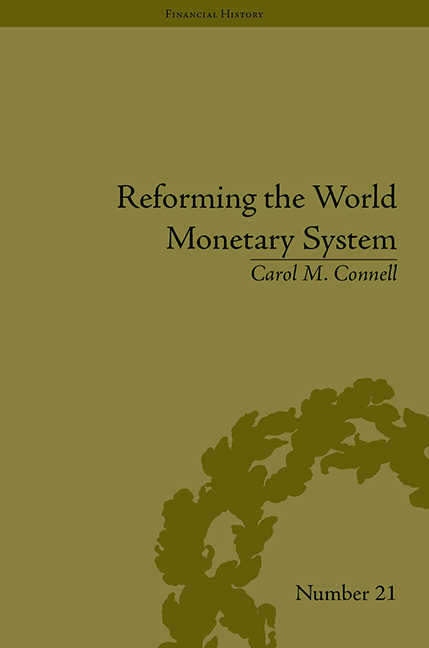Book contents
- Frontmatter
- Contents
- Acknowledgements
- List of Figures and Tables
- Introduction
- 1 A Crisis in Confidence
- 2 Fritz Machlup, his Research and Methodology
- 3 Robert Triffin and the Triffin Plan
- 4 William Fellner and the Intersection of Macro and Microeconomics
- 5 Why Economists Disagree: The Role of Framing in Consensus Building
- 6 ‘Assuring the Free World's Liquidity’ through Multiple Reserve Currencies
- 7 Milton Friedman and the Arguments for Flexible versus Fixed Exchange Rates
- 8 Collaboration with the Group of Ten
- 9 Adjustment Policies and Special Drawing Rights: Joint Meetings of Officials and Academics
- 10 From the Bellagio Group to the Bürgenstock Conferences
- 11 From the Bellagio Group and Joint Conferences of Officials and Academics to the Group of Thirty
- 12 Reassessing the Bellagio Group's Impact on International Monetary Reform
- 13 The Impact of the Bellagio Group on International Trade and Finance Scholarship from the 1960s to the Present
- Conclusions
- Notes
- Works Cited
- Index
3 - Robert Triffin and the Triffin Plan
- Frontmatter
- Contents
- Acknowledgements
- List of Figures and Tables
- Introduction
- 1 A Crisis in Confidence
- 2 Fritz Machlup, his Research and Methodology
- 3 Robert Triffin and the Triffin Plan
- 4 William Fellner and the Intersection of Macro and Microeconomics
- 5 Why Economists Disagree: The Role of Framing in Consensus Building
- 6 ‘Assuring the Free World's Liquidity’ through Multiple Reserve Currencies
- 7 Milton Friedman and the Arguments for Flexible versus Fixed Exchange Rates
- 8 Collaboration with the Group of Ten
- 9 Adjustment Policies and Special Drawing Rights: Joint Meetings of Officials and Academics
- 10 From the Bellagio Group to the Bürgenstock Conferences
- 11 From the Bellagio Group and Joint Conferences of Officials and Academics to the Group of Thirty
- 12 Reassessing the Bellagio Group's Impact on International Monetary Reform
- 13 The Impact of the Bellagio Group on International Trade and Finance Scholarship from the 1960s to the Present
- Conclusions
- Notes
- Works Cited
- Index
Summary
Introduction
Born in Belgium in 1911 and educated at the Catholic University of Louvain, Triffin left for the USA in 1935 to pursue an MA at Harvard University. He returned briefly to Belgium, where his decision to go back to the USA to become the first Belgian to earn a PhD at Harvard put him at odds with Léon H. Dupriez, head of the economic research institute at Louvain (along with Fernard Baudhuin and Paul van Zeeland), where Triffin had been a research assistant. Yet his decision to return to the USA in 1939 was propitious, because the Nazis invaded Belgium in 1940. This just-in-time escape from an authoritarian regime is a life experience he shared with Machlup and Fellner.
In his brief biography in the Banca Nazionale del Lavoro Quarterly Review, Triffin acknowledged Joseph Schumpeter, his dissertation adviser, as a major influence on his understanding of pure economic theory. He studied fiscal policy from a Keynesian perspective with John Williamson (whose national key currencies perspective Triffin would not share) and Alvin Hansen (whose perspective on ‘fundamental disequilibrium’ Triffin would embrace). Like Hansen, Triffin believed that a country's balance of payments position might arise from significant internal imbalances (deep recession, low output, high unemployment), which could outweigh balance of payments considerations and point towards major policy changes.
- Type
- Chapter
- Information
- Reforming the World Monetary SystemFritz Machlup and the Bellagio Group, pp. 37 - 50Publisher: Pickering & ChattoFirst published in: 2014



